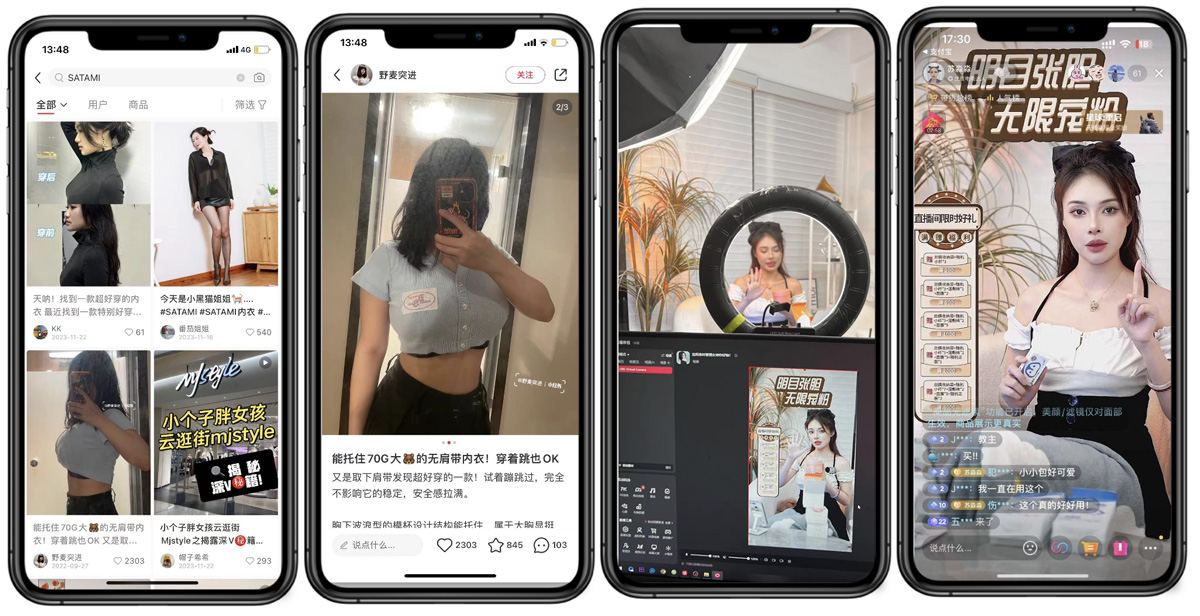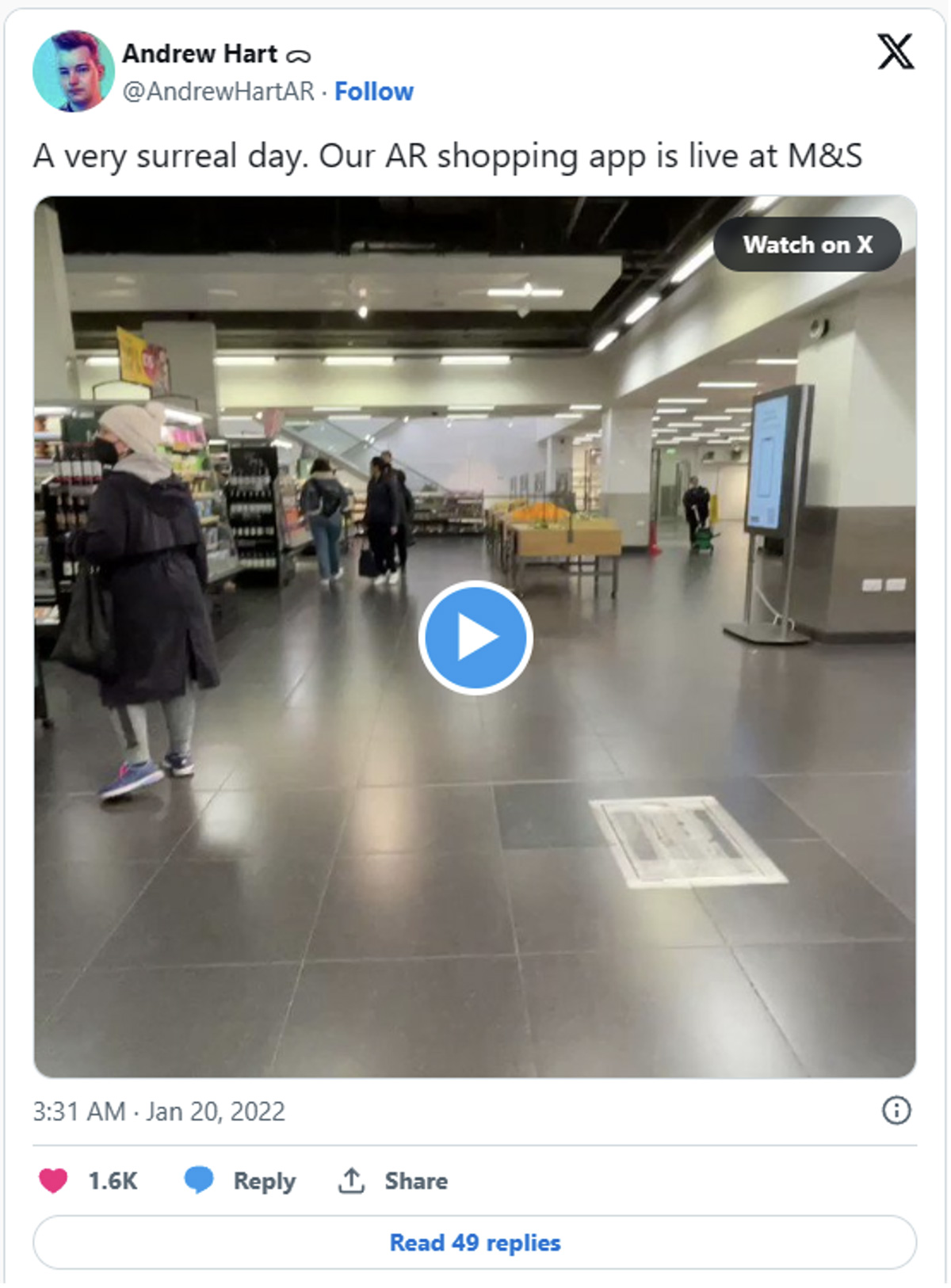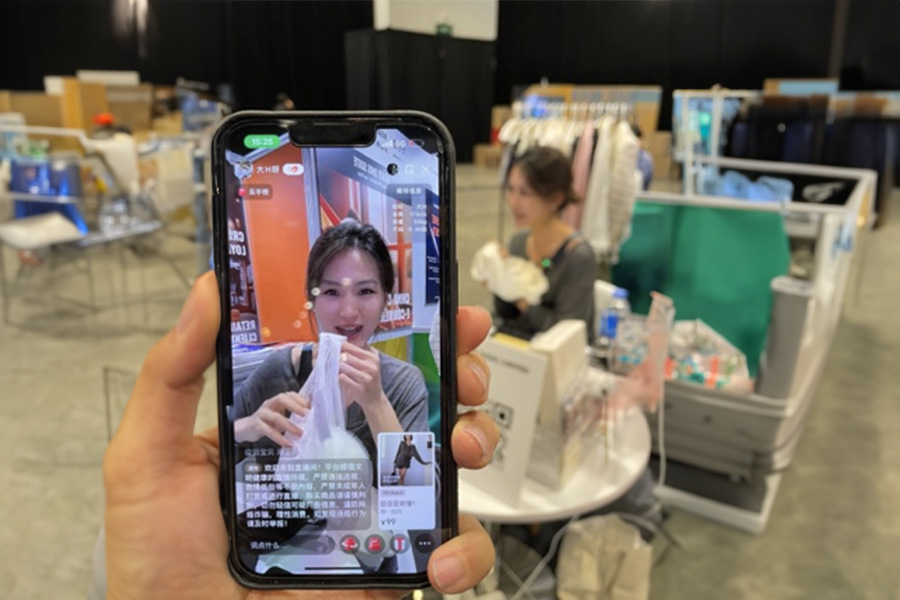In today’s interconnected world, the rise of social commerce is reshaping the landscape of online shopping. Social media platforms like Instagram, Facebook, Pinterest, and TikTok have evolved into powerful marketing channels, blurring the lines between social interaction and e-commerce. By integrating social media into their e-commerce strategies, businesses can tap into a vast pool of potential customers and create personalized shopping experiences that resonate with their target audience.
1. Direct Engagement and Seamless Shopping Experiences:
Social media platforms provide businesses with powerful tools to engage with customers in real-time and facilitate seamless shopping experiences. For example, platforms like Instagram and Facebook offer integrated shopping features that allow businesses to showcase their products or services and enable customers to make purchases without leaving the app. This direct engagement enhances the overall shopping experience and increases conversion rates. Indeed, Retail Touchpoints has projected live-streaming market will likely reach US$35 billion in sales volume by 2024 globally compared to US$20 billion in 2022.
• In China, livestream commerce has already become a common lifestyle. More than two-thirds of Chinese consumers surveyed in 2022 had bought products via livestream in the past year.
• While retailers in the west are increasingly using live-stream shopping to grow business, China are leading the trend with virtually all consumers in China having streamed a sales video. In contrast, 43% of United States consumers do not know of live shopping.

2. Harnessing User-Generated Content and Influencer Marketing:
Social commerce enables businesses to leverage user-generated content and influencer marketing to amplify their reach and credibility. Platforms like XiaoHongShu (RED) in China and TikTok globally have become popular hubs for user-generated content and influencer marketing, especially among younger demographics. By encouraging customers to share their experiences and recommendations on social media, businesses can tap into the power of word-of-mouth marketing and build trust with their audience.
Indeed, 84% of people will buy a product or service based on a brand’s video. According to Klarna (2023), 60% of shoppers who used livestream shopping reported a better purchase experience than the conventional method. Companies also reported live commerce conversion rates are up to 15x higher than conventional e-commerce.
Consequently, influencer collaboration and livestream commerce in China on TikTok & Red are important strategies used by retailers to create brand awareness and drive sales growth.

3. Boosting Your Social Commerce Strategy with Effective Social Selling
To build a robust social commerce strategy, it’s crucial to understand the distinctions between social selling and social commerce. Social selling involves engaging with potential and existing customers through social media to influence their purchasing decisions and drive conversions. This approach focuses on nurturing relationships by sharing valuable content, answering questions, and providing solutions. In contrast, social commerce is about conducting direct sales via social media platforms, integrating the entire shopping experience—from product discovery to purchase—within these platforms to ensure a seamless process for customers.
• Enhancing E-commerce Sales with Social Selling:
Integrating social selling into your e-commerce strategy can significantly boost sales. Here’s a comprehensive look at how social selling can enhance e-commerce performance:
(a) Building Trust and Loyalty: Social selling is fundamentally about building relationships. By consistently engaging with your audience through personalized interactions and providing valuable content, you cultivate trust and loyalty. This trust translates into higher customer retention rates. According to LinkedIn, businesses that prioritize social selling are 51% more likely to hit their sales targets.
(b) Higher Engagement Rates: Social selling involves creating and sharing content that resonates with your audience, fostering engagement. Whether it’s through insightful blog posts, engaging videos, or interactive polls, high-quality content encourages likes, shares, and comments. Hubspot reports that companies utilizing social selling see a 61% increase in revenue, attributed to enhanced customer engagement.
(c) Expanding Reach: Social selling enables brands to reach a broader audience by leveraging social media networks. By engaging with influencers, participating in relevant online communities, and using targeted ads, brands can significantly increase their visibility. According to OptinMonster, social selling generates 45% more sales opportunities than traditional sales methods due to its expansive reach.
(d) Improving Lead Quality: Social selling isn’t just about quantity; it’s about quality. Engaging with potential customers on social media platforms allows for more personalized interactions, leading to higher-quality leads. These interactions can provide insights into customer needs and preferences, allowing for more effective targeting. Based on Hubspot’s 2024 State of Sales report, 33% of salespeople say that social media offers the highest quality leads, matching the quality of referrals from existing customers.
(e) Enhanced Credibility and Authority: By consistently providing valuable information and solutions through social media, businesses can establish themselves as industry authorities. This perceived expertise makes customers more likely to trust and purchase from the brand. For example, businesses that regularly share expert insights and helpful content see an increase in customer trust and loyalty.
• Platforms for Implementing Social Selling and Social Commerce:
Both strategies can be effectively executed on several social media platforms:

– Facebook: With nearly 3 billion monthly active users, Facebook is ideal for both social selling and social commerce. The “Facebook Shop” feature allows direct selling on the platform, while its vast user base supports extensive relationship-building efforts.
– Instagram: Boasting around 2.35 billion monthly active users, Instagram excels in facilitating both strategies. Features like “Instagram Shopping” and “Shoppable Posts” enable seamless transactions within the app, while engaging visual content helps build customer relationships.
– TikTok: TikTok, with over 1 billion monthly active users, is rapidly becoming a powerhouse for both social selling and social commerce. The platform’s engaging video format allows brands to connect with audiences through creative and entertaining content, fostering relationships and trust. TikTok’s “Shop Now” feature enables direct purchases, providing a seamless shopping experience. For instance, a viral TikTok video can lead to significant sales spikes; a study by TikTok revealed that 67% of users are more likely to buy from brands they see on the platform.
Although social selling and social commerce are distinct strategies, they complement each other well. Instead of choosing between the two, leveraging both can maximize the potential of social media to drive sales and enhance brand loyalty. By combining the relationship-building strengths of social selling with the seamless transaction capabilities of social commerce, you can create a powerful, cohesive approach to e-commerce success.
4. The Rise of Gamification in Online Shopping Experience:
Gamification has emerged as a dynamic solution to common challenges faced by e-commerce platforms, revolutionising the landscape of social commerce engagement and brand loyalty. Here’s how incorporating gamified elements transforms the online shopping experience:
• Augmented Reality (AR) for Personalised Experiences: AR empowers customers to virtually interact with products, try them on, and visualize them in their space, bolstering confidence and reducing purchase risk. Deloitte’s AR report indicates that over half of consumers express increased confidence in product quality when using AR technology for risk-free ‘try-before-you-buy’ experiences. Furthermore, AR interactions are associated with a remarkable 94% higher conversion rate, showcasing the transformative impact of AR technology on social commerce.
For example: Christian Dior Parfums seized the potential of AR ‘try-ons’ with an innovative campaign for its Dior Addict Lipstick during Eid 2023, a period known for a surge in beauty product searches. Collaborating with Google and Spark Foundry, the brand incorporated AR technology into Video Action Campaign ads on YouTube and Google’s partner sites. These ads featured models showcasing different lipstick shades on various skin tones, prompting viewers to ‘try it on’ via their smartphone camera’s selfie mode.
 |  |  |
| 41% of consumers clicked on at least one shade in the AR Beauty Try On panel | People tried the different Dior Addict lipstick shades over 400,000 times | More than 2,000 screenshots were taken on mobile phones |
(Photo Source: Interactive augmented reality ads help Christian Dior Parfums reach 4M people in the Middle East over Eid)
The shoppable video ads directed interested consumers straight to the Dior website for purchase. Targeting Saudi Arabia, the United Arab Emirates, Kuwait, and Qatar, the campaign reached over 4 million people in 21 days. Impressively, 41% of consumers engaged with the Beauty Try-On panel, resulting in over 400,000 virtual lipstick trials and more than 2,000 mobile screenshots.

(Photo Source: https://www.forbes.com/sites/blakemorgan/2023/08/02/the-top-15-best-examples-of-phygital-customer-experiences/?sh=5f4228d32198)
• Phygital Integration of Social Commerce: The future of customer experience lies in the convergence of physical and digital realms, a concept known as “phygital.” The integration of social commerce with physical stores blurs the lines between online and offline shopping. Features like click-and-collect, in-store AR experiences, and live-streamed events provide seamless, omnichannel customer journeys, enhancing the overall shopping experience. With limitless possibilities, phygital integration represents the next frontier in customer engagement and business innovation.
For example: At British retailer Marks & Spencer, customers now have access to personalized assistance tailored to their preferred items. Through the store’s List&Go app, augmented reality (AR) technology is employed to craft an on-screen navigation path, guiding customers to the precise location of items on their shopping list, right down to their exact placement on the shelf.
“Over the last 18 months we’ve seen an increased customer use of digital, interactive shopping – whether that’s payment methods or QR code-based solutions in-store,” added M&S’ group property, store development and IT director, Sacha Berendji. (CHARGED, 2022)

(Video source: https://x.com/AndrewHartAR/status/1483884928223825921)
• Exclusive Programs and Reward System: Successful gamification applications contribute to customer acquisition and retention. According to Gartner (2020), gamification utilizes game mechanics and experience design to digitally engage and motivate people to achieve their objectives. In essence, gamified features incentivize customers to participate more actively by offering a unique and enjoyable engagement process, encouraging them to strive toward specific goals or earn rewards. However, businesses must remain vigilant in offering meaningful rewards or incentives to customers, ensuring that their engagement efforts are worthwhile and contribute positively to both the brand and the loyalty program.
For example: Starbucks has effectively integrated gamification into its renowned Starbucks Rewards program to cultivate customer loyalty. The program operates on a simple premise: customers accumulate “Stars” with each purchase, unlocking various membership levels as they accrue more stars. This tiered structure offers escalating rewards, incentivizing customers to increase their patronage to attain higher membership tiers.

(Photo source: https://www.cosmo.ph/lifestyle/food-drink/starbucks-rewards-program-2020-a704-20200715)
Moreover, Starbucks enhances customer engagement by introducing personalized challenges and offers, encouraging customers to explore new menu items, visit during specified times, or order in specific ways to earn bonus Stars. This gamified approach not only boosts sales but also fosters a sense of accomplishment among participants.
Conclusion:
In conclusion, the rise of social commerce presents unprecedented opportunities for businesses to connect with customers, drive sales, and build brand loyalty. By embracing social media as an integral part of their e-commerce strategies and leveraging the latest trends and technologies, businesses can stay ahead of the curve and capitalize on the growing influence of social commerce in the digital marketplace.
Click here to contact our Marketing experts to boost your brand’s social commerce strategy.




